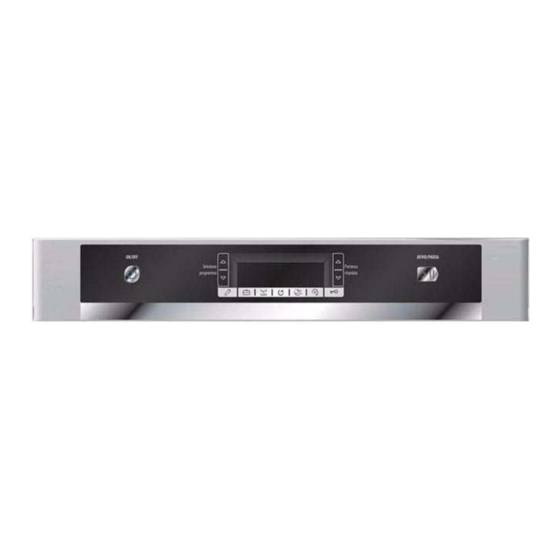Indesit FDEF31111 Сервісна інформація - Сторінка 17
Переглянути онлайн або завантажити pdf Сервісна інформація для Посудомийна машина Indesit FDEF31111. Indesit FDEF31111 20 сторінок.

- 1. Table of Contents
- 2. Safety Notes & General Servicing Advice
- 3. General Information and Console Panel
- 4. VIRTUAL SENSORS Description and Operation
- 5. Additional Component Descriptions
- 6. Auto Test Cycle
- 7. Fault Codes & Diagnostics
- 8. Thermistor Resistance Chart
- 9. Wiring Diagram
- 10. General Dishwashing Information
Indesit
Company
B. WHITE COATING ON DISHES AND INSIDE THE MACHINE
1. White coating or scale
Detergent not only loosens the remains of food but, together with the calcium salts in the water,
forms water-soluble compounds which prevent the appearance of the white calcium coating or
scale. Insufficient detergent may result in a white coating on dishes and the machine interior.
Unsoftened water can also cause this.
Coatings can often be removed by the following:
Take approximately 100 g of Citric Acid, a white very acidic powder which can be purchased at
chemists. Put the dishes which are to be treated into the dishwasher and fill the dispensing
container with Citric Acid instead of detergent. Then, switch on a normal programme (not the
Economy programme). The container does not take the whole amount of acid powder so interrupt
the programme before the start of the main washing cycle and pour the rest into the main body of
the tub or the inside of the door.
2. White coating on dishes that tastes of salt
Possibly caused by a poor seating regeneration valve or, most likely by a defective salt cap gasket.
C. WHITE CLOUDY FILM ON GLASSWARE (THAT CANNOT BE WASHED OFF)
This is probably a surface deposit known as 'silica scum' or 'detergent scum' which can sometimes
form by precipitation of one of the components of dishwasher detergents.
The film can be scratched off with the tip of a needle (unlike etching). Unfortunately it can only be
effectively removed under laboratory conditions.
However, the following will prevent or slow down the deposits: -
1. Use less detergent where possible i.e.: when washing medium to lightly soiled items.
2. Do not use poor quality detergent.
3. Make sure that the rinse aid setting is correct. Lack of rinse aid could accentuate the problem.
4. Use a liquid rather than a powder detergent (for dishwashers) particularly if glassware is constantly
being washed.
5. Take care not to overload machine.
6. Avoid washing poor quality glassware if possible.
7. Check the salt regeneration setting is correct for the water supply.
8. Check that the machine is filling correctly.
9. Check that the machine is rinsing correctly.
10. Check that the softener by-pass is working correctly.
11. If the dishwasher has programmes of less than 65°C, use these in preference to 65°C
programmes when washing glassware.
D. WHITE DISHES TURNING PINK
1. Caused by a chemical reaction between dishwasher detergent and porcelain. This porcelain is not
dishwasher proof.
2. Formation of silicate scum on the dishes caused by using insufficient detergent.
Silicate scum absorbs iron and/or Manganese which is present in all water supplies. This colours
the scum light brown or pink.
Service Manual UK
17 of 20
English
